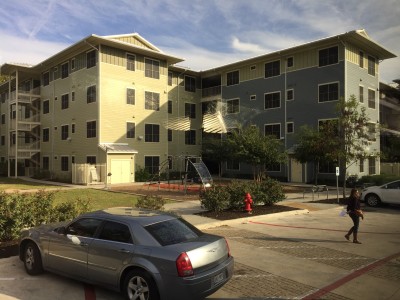Greenville SC Visits Austin, TX - Swamp Rabbit Inn Part of Inter Community Leadership Visit
/ In mid November 2015, I traveled with 89 individuals from Greenville, SC to Austin TX on an inter community leadership visit sponsored by the Greenville Chamber of Commerce. Our group collectively represented the arts, government, development, real estate, restaurants, entrepreneurs, affordable housing leaders, tech and chamber of commerce leaders from our Greenville SC community. The purpose of the visit was to learn from Austin, a city that is growing by the rate of 130 people a day.
In mid November 2015, I traveled with 89 individuals from Greenville, SC to Austin TX on an inter community leadership visit sponsored by the Greenville Chamber of Commerce. Our group collectively represented the arts, government, development, real estate, restaurants, entrepreneurs, affordable housing leaders, tech and chamber of commerce leaders from our Greenville SC community. The purpose of the visit was to learn from Austin, a city that is growing by the rate of 130 people a day.
Some of the things that impressed me most about Austin, TX:
1) Waller Creek Project
2) Affordable Housing Options
3) Rainey Street
4) Capital Factory
5) Bunkhouse Group Boutique Hotels
6) Great Cycling Friendly City
We met with leaders from various sectors and learned what a rapidly growing city has done right and what they could do better. These are valuable insights as Greenville manages it's growth. Greenville has been featured on many top 10 lists over the past few years and our secret is getting out! Just look at the number of cranes dotting our City skyline and the number of new residential and commercial developments going up downtown.
As we explored the city of Austin it is not hard to notice that there is something special going on there. The amount of live music, restaurants, outdoor space and new development is remarkable. It was also pretty apparent that there was a large homeless population and the traffic was and issue. I talked with locals and they had a lot to say about how quickly their city has changed. Most of the growth has happened in the last 5 years.
I saw a lot of similarities between Greenville and Austin. These first two projects in particular really inspired me.
Waller Creek:
Recognizing and highlighting the natural features of a city can prove to be a very wise move. Waller Creek in Austin had been long ignored and covered up. Similarly, our Reedy River and especially the Reedy River Falls in the heart of our downtown was once covered up with a bridge and very polluted. The Waller Creek project still has a way to go but aims to create valuable, attractive natural spaces following the creek. The master plans include a trail, parks, green space and an amphitheater.
In Greenville, our Falls Park on the Reedy River is a glowing example of cleaning up and developing around a natural feature. I think we can continue to follow the river and create another exciting space in the proposed Mayberry Park just west of downtown Greenville. Much like the Highline in NYC and Millennium Park in Chicago our Mayberry Park can be home to art, culture, sports and much more. We already have the Swamp Rabbit Trail running along the river in this area.
Affordable Housing - M Station and Capital Studios by Foundation Communities
I hope to see initiatives and incentives for affordable housing developments around Greenville's proposed Mayberry Park like these two developments we saw in Austin, TX. With the Kroc Center and AJ Whittenburg School in place the area is poised for development that meets the needs of low income families like M Station and Capitol Station developments by Foundation Communities.
M Station is 150 unit tax credit property. It offers 1-3 bedroom apartments for families with income of $20,000-$50,000. It has a rainwater cistern, solar panels and outdoor solar lighting which makes utilities 75% less for residents. It is on the public transit line with light rail and bus stops right out the front door and car to go stations and bike racks for 75 bikes.
Services offered to residents include after school care and summer programs for 700 kids. Adult education from personal finance to advanced degree programs with local universities and community tax filing services for residents.
Capital Studios in downtown Austin is a single room occupancy (SRO) development. They offer micro units around 500 square feet with large community space, to single people and rent for $400-$600/month. There are 10 units set aside for the creative class (artists, musicians) and 47 units set aside for veterans.
The City of Austin in 2006 overwhelmingly passed and $55 million general obligation bond with 75% of the funds going to rental housing and 25% going to home ownership. In 2013 another $65 million general obligation bond was passed for affordable housing. It is clear to see Austin's commitment to a plan for affordable housing for its lower income residents (civil servants, teachers, artists, veterans) who are an integral part of the community. Affordable housing was considered part of the infrastructure of the city.
The Greenville Housing Authority has a 5000 person waiting list for affordable housing. There is a real shortage of private housing stock offered for affordable housing credits in Greenville. I think we can learn a lot from what Austin has accomplished.
I came away with a strong sense of hope. The people of Austin have a can do, creative determination to solving their problems and the problems faced by most cities today.
People are drawn to communities that offer rich culture in a variety of arts, music, restaurants, outdoor amenities, good schools, safe streets, etc. These are the elements that make a community thrive for locals and visitors alike. People want to live in cities that offer good jobs and a healthy economy, with quality, affordable housing and a lot to do when they are not working. This is how you attract talent and tourists.
Rainey Street
Rainey Street is a perfect example of this. This block of smaller, older homes was zoned commercial but also fell under historical preservation protection. Some one had a great idea to open a bar in one of the small houses and soon more bars and restaurants continued to pop up along Rainey Street. Large residential developments are going up right along side this distinctive little street that attracts thousands of locals and visitors. Rainey Street was a favorite stop for many in our group!
We also visited Liz Lambert's San Jose Hotel and St. Cecilia Hotel. I love her story and appreciated her accomplishments even more after watching her documentary "The Last Days of the San Jose" where she shows how she ran a transient hotel for three years until she received the loan she needed for a complete renovation. She went on to re-open the San Jose Hotel, a cool, boutique hotel housing many of the visiting bands and artists. Her other properties in her growing boutique hotel empire include - Hotel St. Cecilia (Austin, TX), El Cosmico (Marfa, TX) and future properties under way in Mexico and more.
2) Uplight all the mill towers dotting the west Greenville landscape, showcasing our textile heritage. A solar lighting solution would be ideal!
3) Work to promote affordable housing around Mayberry Park and around Greenville. It is part of our infrastructure and will help to insure a vibrant, healthy community.
Bottom line … Mayberry Park presents a fresh canvas for some exciting public/private partnerships to creatively solve housing problems, build the quality of life and health of our citizens, install more public art and make some music!! With targeted focus on that area spectacular things can happen. Want to help? Email me at swamprabbitinn@gmail.com with ideas, suggestions or to join the team. I think we need to start a Mayberry Park Conservancy!
Please share this post if you enjoyed it and join our email list for more news from the Swamp Rabbit Inn #bikeinnbikeout #yeahTHATgreenville


















